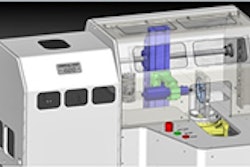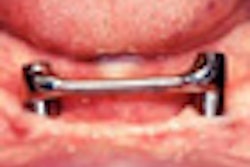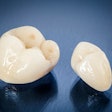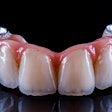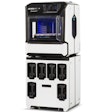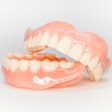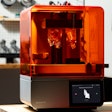Working with a computer-assisted densitometric image analysis (CADIA) program, researchers from the University of São Paulo used quantitative image subtraction to detect density variations in human mandibles (Dentomaxillofacial Radiology, September 2010, Vol. 39:6, pp. 356-361).
To evaluate quantitative variations of in vitro mineral density by varying the exposure time of direct digital radiographs using the CADIA program, they first created a three-wall periodontal defect in a human mandibular segment, mesial to a molar. Bone chips were then created from the marrow bone of the same mandible, with masses of 1 mg to 5 mg.
A triplicate radiograph of the defect was taken as a baseline for seven different exposure times. The bone chips were inserted into the defect and another triplicate series of radiographs for the seven exposure times were taken. The images were then analyzed using the CADIA software to detect variations in bone density.
The results revealed increased density when the size of the inserted bone chip increased. An exposure time f6 (0.178 sec.) yielded the best correlation with the bone chip weight. Loss of information in the images occurred when the exposure time exceeded the sensor's latitude.
"CADIA analysis is a reliable and sensitive tool for detecting subtle bone density variations," the researchers concluded. However, they added, because more reliable results are obtained with increased exposure time, practitioners should avoid excessive exposure times.
Copyright © 2010 DrBicuspid.com




